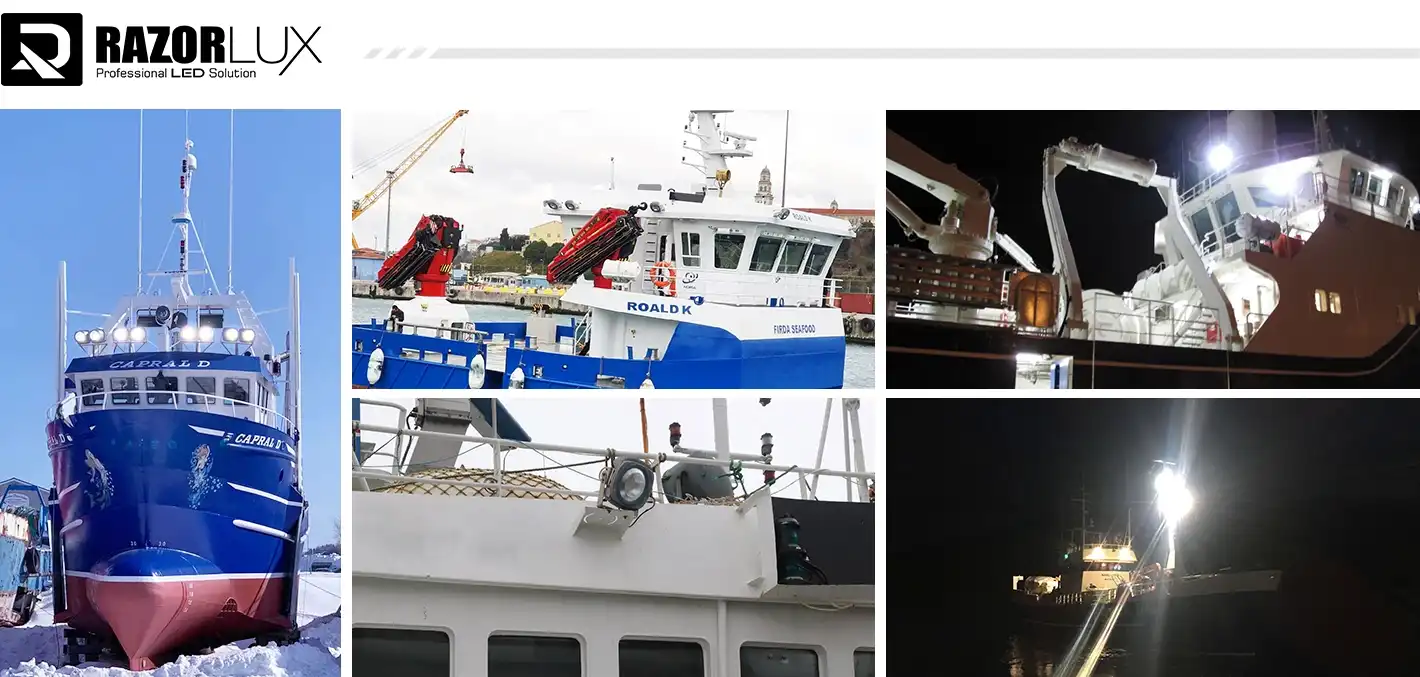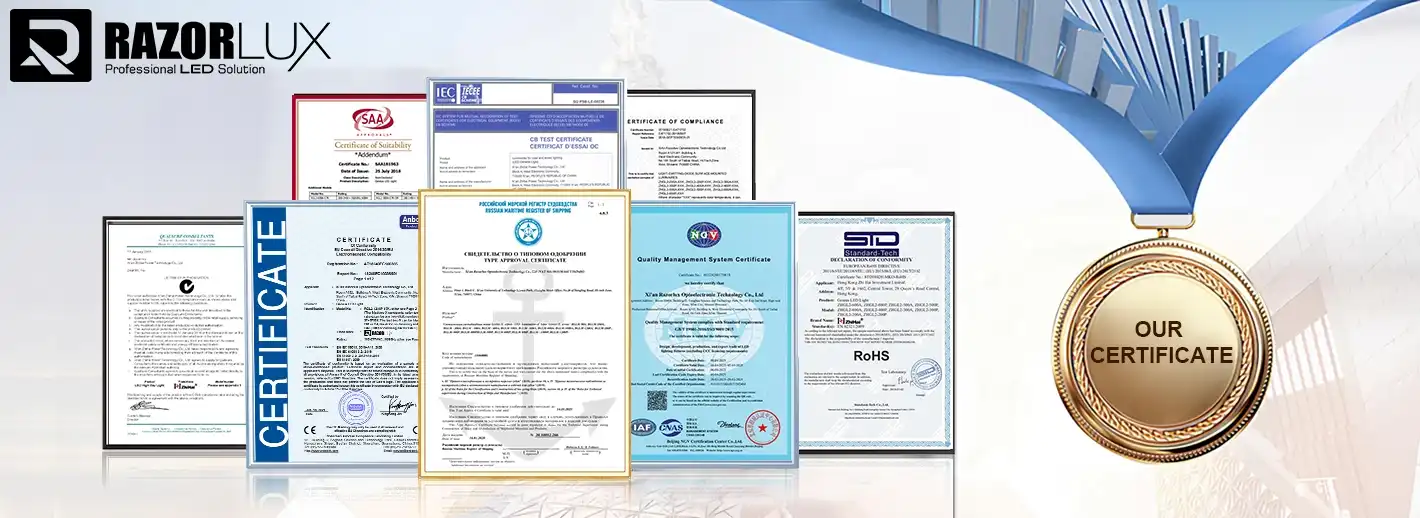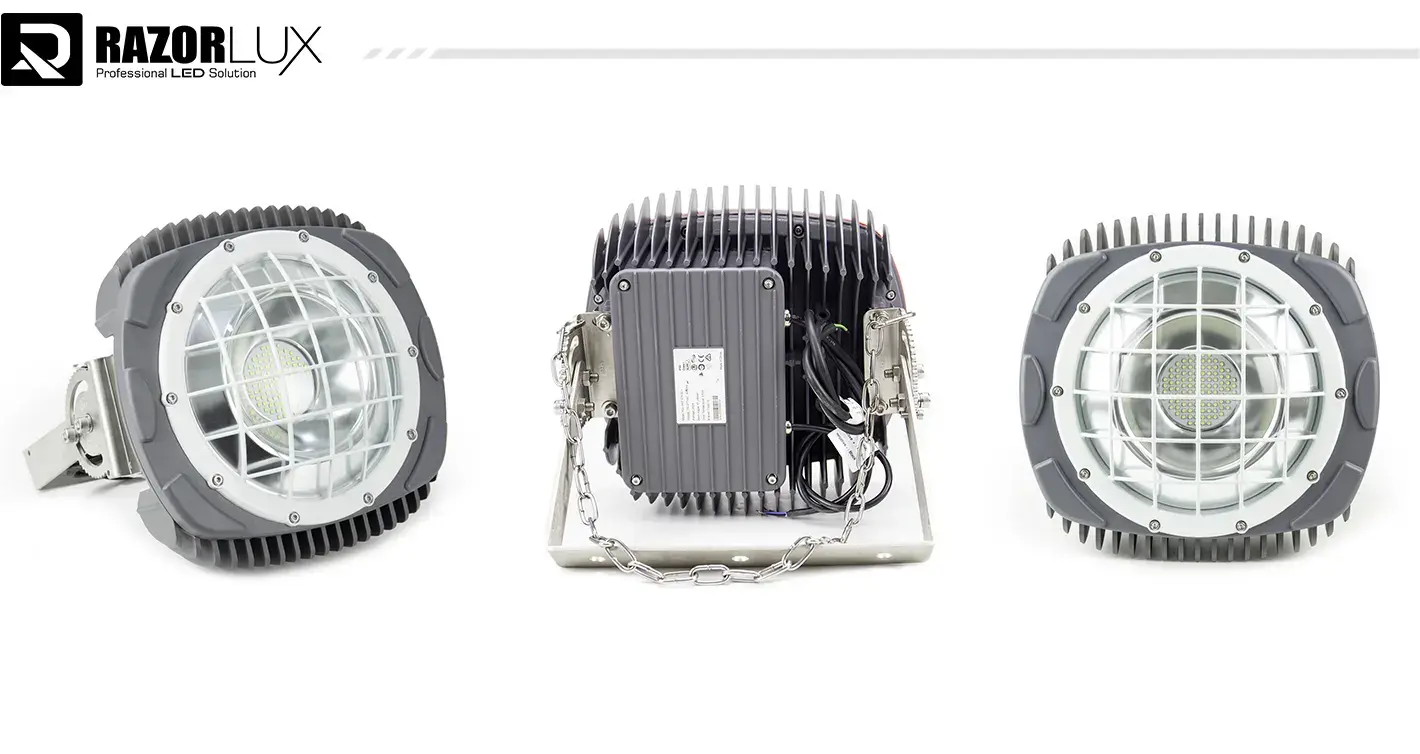What safety standards do marine LED deck lights need to meet?
When your vessel's safety depends on reliable deck illumination in harsh marine conditions, understanding regulatory compliance becomes critical for operational safety and legal requirements. Marine LED Boat Deck Lights must meet stringent international safety standards to ensure they perform reliably in saltwater environments, extreme temperatures, and challenging maritime conditions. This comprehensive guide addresses the essential safety certifications, testing requirements, and compliance standards that govern marine LED deck lighting systems, helping vessel operators make informed decisions about their lighting infrastructure investments.

Essential Safety Certifications for Marine LED Boat Deck Lights
International Maritime Organization (IMO) Standards
International Maritime Organization standards establish the foundation for marine lighting safety worldwide. Marine LED boat deck lights operating on commercial vessels must comply with IMO COLREG (International Regulations for Preventing Collisions at Sea) requirements, which specify minimum luminous intensity, color specifications, and visibility ranges for navigation lighting systems. The 5000K navigation LED boat deck light technology provides optimal color temperature for maritime visibility while meeting these strict international guidelines. These regulations ensure vessels maintain safe navigation capabilities regardless of weather conditions or operational environments.
USCG Certification Requirements
United States Coast Guard certification represents one of the most rigorous marine lighting standards globally, requiring comprehensive testing for electrical safety, environmental durability, and operational reliability. Marine LED boat deck lights seeking USCG approval must demonstrate compliance with CFR Title 46 regulations covering construction materials, electrical installations, and performance specifications. The certification process includes extensive salt spray testing, vibration resistance evaluation, and thermal cycling assessments to verify long-term reliability in marine environments. USCG-certified LED boat deck light systems provide vessel operators with confidence in regulatory compliance and insurance coverage.
European CE Marking Standards
European Conformity marking ensures marine LED boat deck lights meet essential health, safety, and environmental protection requirements throughout European Union waters. CE certification encompasses multiple harmonized standards including electromagnetic compatibility (EMC), low voltage directive (LVD), and restriction of hazardous substances (RoHS) compliance. The 5000K navigation LED boat deck light technology incorporating CE marking demonstrates adherence to European technical regulations while ensuring compatibility with existing marine electrical systems. This certification enables market access across EU member states while maintaining consistent safety standards.
Classification Society Approvals
Major classification societies including ABS (American Bureau of Shipping), DNV GL, Lloyd's Register, and Bureau Veritas provide independent verification of marine LED boat deck light compliance with international standards. These organizations conduct comprehensive testing programs evaluating mechanical strength, electrical performance, environmental resistance, and operational reliability under extreme conditions. Classification society approval demonstrates that LED boat deck light systems meet or exceed industry benchmarks for commercial marine applications, providing vessel operators with third-party validation of product quality and safety performance.
Technical Safety Testing Requirements for LED Boat Deck Light Systems
| Testing Parameter | Standard Requirement | Razorlux RGL-150A Specification |
|---|---|---|
| IP Rating | IP65 minimum | IP65 (upgradeable to IP67) |
| Operating Temperature | -20°C to +60°C | -40°C to +60°C |
| Vibration Resistance | IEC 60068-2-6 | IK10 impact rating |
| Salt Spray Testing | ASTM B117 500 hours | Marine-grade anti-corrosion coating |
Ingress Protection (IP) Rating Standards
Ingress Protection ratings define the level of protection marine LED boat deck lights provide against solid particles and liquid ingress, critical factors in maritime environments where equipment faces constant exposure to saltwater, spray, and debris. IP65 rating represents the minimum acceptable standard for marine deck lighting, ensuring complete dust protection and resistance to water jets from all directions. The 5000K navigation LED boat deck light with IP67 rating offers superior protection against temporary immersion, making it suitable for applications where occasional flooding or heavy spray conditions occur. Advanced IP68-rated systems provide complete submersion protection for underwater or extremely exposed installations.
Electromagnetic Compatibility (EMC) Testing
Electromagnetic compatibility testing ensures marine LED boat deck lights operate without interfering with critical navigation, communication, and safety systems aboard vessels. EMC standards include conducted and radiated emissions testing to verify LED drivers and control circuits don't generate harmful electromagnetic interference affecting radar, GPS, radio communications, or other sensitive electronic equipment. The testing also evaluates immunity to electromagnetic disturbances from nearby equipment, ensuring reliable operation in electrically noisy marine environments. Compliance with EMC directives prevents operational disruptions and maintains vessel safety system integrity.
Thermal Management and Fire Safety Standards
Thermal management testing evaluates how marine LED boat deck lights dissipate heat while maintaining safe operating temperatures under continuous operation and extreme ambient conditions. Fire safety standards require non-combustible housing materials, flame-retardant wiring, and thermal protection systems preventing overheating-related hazards. The LED boat deck light thermal testing includes temperature cycling, thermal shock resistance, and long-term stability evaluation ensuring consistent performance throughout the product's operational lifespan. Proper thermal management extends LED lifespan while preventing fire risks in marine environments.

Vibration and Shock Resistance Testing
Marine environments subject lighting equipment to constant vibration from engines, wave action, and operational stresses requiring comprehensive mechanical testing to verify structural integrity. Vibration testing follows IEC standards simulating real-world marine conditions including resonance frequencies, random vibration profiles, and shock impulses from heavy seas or mechanical impacts. The LED boat deck light mechanical testing ensures optical components, electrical connections, and housing structures maintain alignment and functionality despite continuous mechanical stress. This testing prevents premature failure and maintains consistent light output throughout the product's service life.
Electrical Safety and Installation Standards for Marine LED Boat Deck Light Applications
Marine Electrical Code Compliance
Marine electrical installations must comply with ABYC (American Boat and Yacht Council) standards or equivalent international codes governing electrical system design, installation practices, and safety requirements. These codes specify proper wire sizing, circuit protection, grounding techniques, and installation methods for marine LED boat deck lights in various vessel configurations. The 5000K navigation LED boat deck light systems require appropriate overcurrent protection, proper conductor sizing for voltage drop considerations, and corrosion-resistant electrical connections meeting marine-grade specifications. Compliance ensures electrical safety while maximizing system reliability and longevity.
| Electrical Parameter | Marine Standard | Razorlux Specification |
|---|---|---|
| Input Voltage Range | 12V/24V DC typical | 80-400V DC, 80-315V AC |
| Power Factor | >0.90 preferred | ≥0.98 |
| THD | <20% maximum | <10% |
| Surge Protection | Required | Built-in driver protection |
Circuit Protection Requirements
Proper circuit protection prevents electrical hazards and equipment damage in marine LED boat deck light installations, requiring appropriately sized fuses or circuit breakers matched to load characteristics and conductor ampacity. Marine environments demand higher levels of overcurrent protection due to moisture, corrosion, and vibration factors affecting electrical connections and conductor integrity. The LED boat deck light circuit protection must account for inrush currents, harmonic distortion, and power factor characteristics of LED drivers while providing reliable fault clearance. Advanced protection systems include surge suppression, ground fault detection, and arc fault protection enhancing overall electrical safety.
Grounding and Bonding Standards
Marine grounding systems protect personnel and equipment from electrical shock hazards while providing proper reference potential for electronic equipment operation. LED boat deck light installations require connection to the vessel's common grounding system through corrosion-resistant bonding conductors sized according to electrical codes. The grounding system must accommodate DC and AC electrical systems while preventing galvanic corrosion between dissimilar metals in the marine environment. Proper grounding also provides lightning protection and reduces electromagnetic interference affecting sensitive navigation equipment.
Installation Environment Classifications
Marine electrical installations are classified by location and exposure level, determining appropriate equipment ratings and installation techniques for LED boat deck light applications. Hazardous locations require explosion-proof or intrinsically safe equipment meeting ATEX or similar standards for areas where flammable vapors may be present. Weather-resistant installations need equipment rated for continuous outdoor exposure with appropriate sealing, drainage, and corrosion protection. The 5000K navigation LED boat deck light selection must match environmental classification requirements while providing adequate illumination for operational needs.
Conclusion
Marine LED boat deck lights require comprehensive safety certification encompassing electrical, environmental, and performance standards to ensure reliable operation in demanding maritime conditions. Proper compliance protects vessel operations while meeting insurance and regulatory requirements.
Ready to upgrade your vessel's lighting with certified marine LED solutions? Xi'an Razorlux Optoelectronic Technology Co., Ltd. offers industry-leading LED boat deck light systems with full compliance certifications including UL, CE, RMRS, TUV, SAA, and RoHS standards. As a leading China LED Boat Deck Light manufacturer and China LED Boat Deck Light supplier, we provide comprehensive solutions from our China LED Boat Deck Light factory with competitive China LED Boat Deck Light wholesale pricing. Our LED Boat Deck Light for sale features advanced 5000K navigation technology with exceptional LED Boat Deck Light price value. Contact our expert team at sam@razorlux.com for customized marine lighting solutions backed by our 5-year warranty and professional technical support.
References
1. "International Regulations for Preventing Collisions at Sea (COLREG)" - International Maritime Organization, 2022 Edition
2. "Marine Electrical and Electronics Systems Safety Standards" - American Bureau of Shipping, ABS Guide for Marine Electrical Systems, 2021
3. "LED Marine Lighting Systems: Performance and Safety Requirements" - Society of Naval Architects and Marine Engineers, SNAME Technical Papers, 2023
4. "Electromagnetic Compatibility Standards for Marine Electronics" - International Electrotechnical Commission, IEC 60533:2019 Marine Navigation Equipment Standard

_1750326878398.png)

